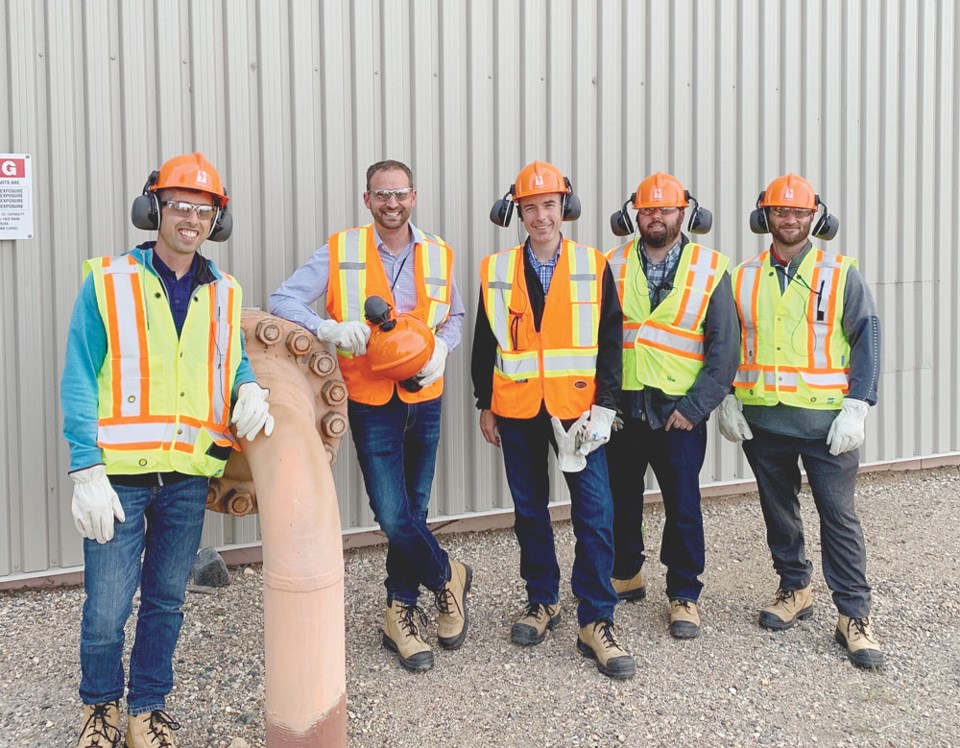The leader of the Saskatchewan New Democratic Party (NDP) Ryan Meili, along with environment and agriculture critique Yens Pedersen and Indian Head-Milestone candidate Jared Clarke, visited Estevan on Aug. 1.
The delegation toured the Boundary Dam power plant and carbon capture and storage (CCS) facility, and met with representatives of the City of Estevan.
“It was a very good visit,” said Meili. “Very impressive technology. Very impressive engineering and chemistry. Quite interesting to see it (CCS) in operation.”
The NDP leader came to Estevan to talk about the risks the city is facing due to the planned closure of some of the Boundary Dam facilities.
“We’ve got the situation in Estevan with the pending closure of a number of the plants that have a serious risk to the community in terms of job losses. And we haven’t seen any significant plan from the provincial government actually addressing any of that,” said Meili.
“But we know that Saskatchewan has benefited so much from Estevan as our Energy City over the years. And that there are lots of opportunities ahead to continue to be an energy city, but that only happens if we have the provincial government at the table actually working alongside the community.”
Meili pointed out that no matter what, the coal phase-out is coming. It was a decision made by the previous federal government and now the province and the city need to find ways to keep developing.
“What we need to do to deal with that is the conversation that isn’t happening in an honest and clear way,” Meili said.
He noted that he would like to see the provincial government come forward and say that they are willing to work with Estevan, looking at all of the options for economic development.
“Look at all of the energy opportunities. We’ve had coal, and oil, and gas as huge elements to the local economy. Those will continue in one way or another. But what else is going to happen with geothermal, with the wind, with solar?”
Estevan is in a prime location to continue to be a centre of excellence for energy, but according to Meili, it only can happen if the province is willing to engage.
After touring Boundary Dam, Meili met with Dwight (Fitz) Bramble, the economic development co-ordinator for the City of Estevan, and with one of the city councilors to discuss options available for Estevan to keep the jobs throughout the coal phase-out.
“We had some discussion around what are the possibilities for those people whose jobs are (at risk) because we don’t see those conversations happening. And I see some answers that need to be a part of the conversation. (Like) what’s SaskPower’s role? Can SaskPower be committing to preferentially hiring people who are either leaving the plant or the mine and making sure they are seeking these people out?”
They also discussed the need for training opportunities for employees who are facing job loss and for their family members, focusing on options that could take place while people are still working at their current positions.
As for the outcome, this visit gave an understanding of the technologies the Energy City currently is using. It also was aimed at creating relationships and getting a better understanding of people’s concerns, and opportunities Estevan may take in the future.
“We’ll continue this conversation. We’ll be coming back at sometime in the fall to talk more with the community about the next steps coming,” said Meili.



